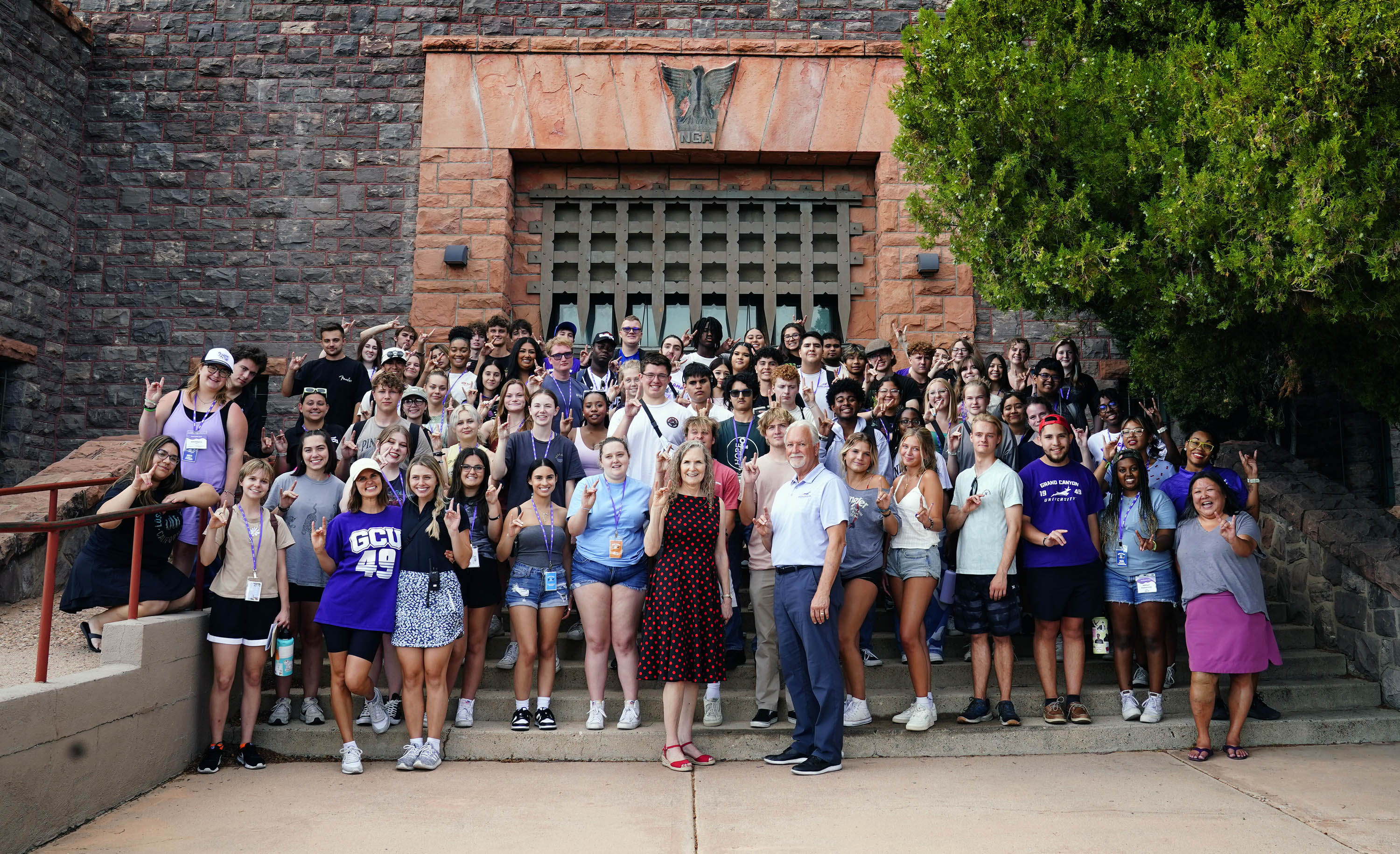
GCU News Bureau
Grand Canyon University is once again a nonprofit university. Or is it a not-for-profit university? And is there a difference?
It's been 14 years since GCU was a nonprofit institution -- a distinction it held from its inception in 1949 until 2004. That all changed Monday when it was announced the completion of the transaction in which Grand Canyon Education (GCE) sold Grand Canyon University to a nonprofit entity that now carries the GCU name.
So we thought it was time for a refresher course on just what a nonprofit is -- and isn't -- and how University employees should refer to that renewed status.
The terms nonprofit and not-for-profit might sound as if they’re the same, yet subtle differences distinguish one from the other.
True, “nonprofit” and “not-for-profit” are similar in that profit isn’t the defining motive for either. They exist to serve the needs of the community, whether to serve the public or the organization’s members, rather than to make a profit in the same way a traditional business might for its owners or stakeholders. Not that nonprofits and not-for-profits don’t make money – a nonprofit is organized like a business and generally expects to make a profit. So despite the terminology, both entities do generate income. They also are regulated differently from for-profit businesses.
But that’s where the similarities end.
First, the two look a little different.
A nonprofit serves the community by promoting charitable, educational, cultural, environmental, social, economic or religious objectives. They are generally larger entities with more organized activities than not-for-profits and might encompass something as significant as a charitable trust.
A not-for-profit, meanwhile, usually carries out smaller group activities with a focus on hobbies, sports or special interests, such as a sports club or women’s club.
When distinguishing between the two, here’s the biggie: Any income generated by a nonprofit is reinvested back into the nonprofit so it can further its public service mission. The board of directors of a nonprofit youth orchestra, for example, might designate income for the purchase of sheet music for its players. Employees of a nonprofit, moreover, earn salaries that do not depend on the organization’s fundraising. Neither is income distributed to directors, trustees, members or, of course, volunteers. While income generated by a not-for-profit also is reinvested into the group, unlike a nonprofit, income may be distributed to its members. A fraternal club, for example, might use some of its income to pay conference trip expenses for its leaders, or a youth member who participates in a fundraiser would be able to go to a camp that the organization pays for using income from that fundraiser.
As far as taxes go, nonprofits and not-for-profits are not automatically tax-exempt, but they can be. They have to meet certain requirements and then must apply to be exempt from paying federal and state taxes. A nonprofit must meet 501(c)(3) requirements that state the public charity must be organized and operated exclusively for religious, charitable, educational and similar public-service purposes. Not-for-profits – social clubs and associations – must meet 501(c)(7) tax requirements that state they must be organized for pleasure, recreation or other similar purposes.
Another distinguishing factor is that nonprofits are classified as noncorporate associations that are legal entities separate from their members. They usually operate via a state or national charter so that their members have legal and financial protection separate from the organization. They operate as official bodies with a charter and governing board of representatives. This isn't the same for not-for-profits, which generally do not operate under a charter, and its members, who are brought together by their similar hobbies and special interests, don’t go as far as forming a legal entity or a governing board.
Now that GCU has made the historic conversion back to being a nonprofit, when speaking or writing about the University, it’s important to use the correct terminology when referring to GCU's renewed status as a nonprofit, as the institution, once so close to closing its doors almost 15 years ago, looks to a new era.
Sources: Bizfluent (Sept. 26, 2017) and Key Differences (Jan. 24, 2015)
Nonprofit vs. not-for-profit: Similarities
- Both serve the community.
- Both generate income but reinvest earnings back into the organization to continue operations and support their causes.
- While many nonprofits and not-for-profits depend on volunteers, they also may hire and pay higher-level employees.
- Both can become incorporated at the state level, which provides financial and legal security for employees.
- Neither pays dividends to stockholders.
Nonprofit vs. not-for-profit: Differences
- Nonprofits usually carry out larger, more organized activities that focus on promoting educational, cultural, religious, social, political or economic missions, while not-for-profits are usually smaller groups focused on sports, hobbies or special interests.
- Nonprofits typically operate under a national or state charter to provide members with financial and legal protection separate from the legal entity of the organization. Nonprofits function as official bodies with a charter and governing board. On the other hand, not-for-profits usually are nonchartered and don’t generally form a legal entity or governing board.
- Income made by a nonprofit cannot be distributed to directors, trustees, members or volunteers but is reinvested into the organization. Also, employees earn salaries that do not depend on the organization’s fundraising efforts. Members of a not-for-profit also reinvest income into the organization, but unlike a nonprofit, members of the not-for-profit may benefit from the group or association’s income (such as having a member's camp or conference fees be paid by the group).
Source: The Strategic CFO (June 4, 2014)










